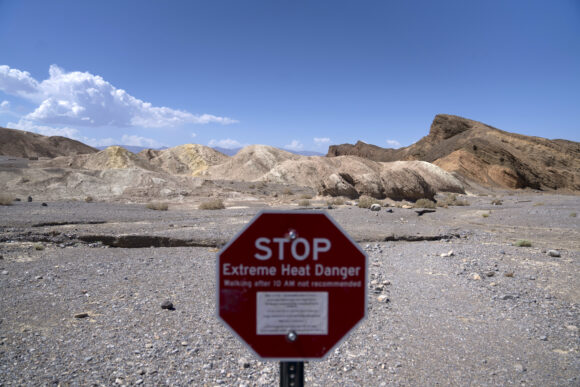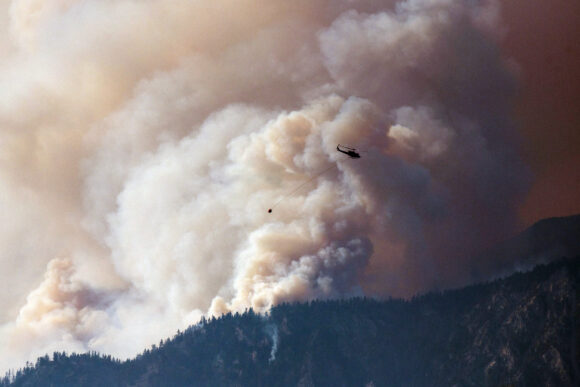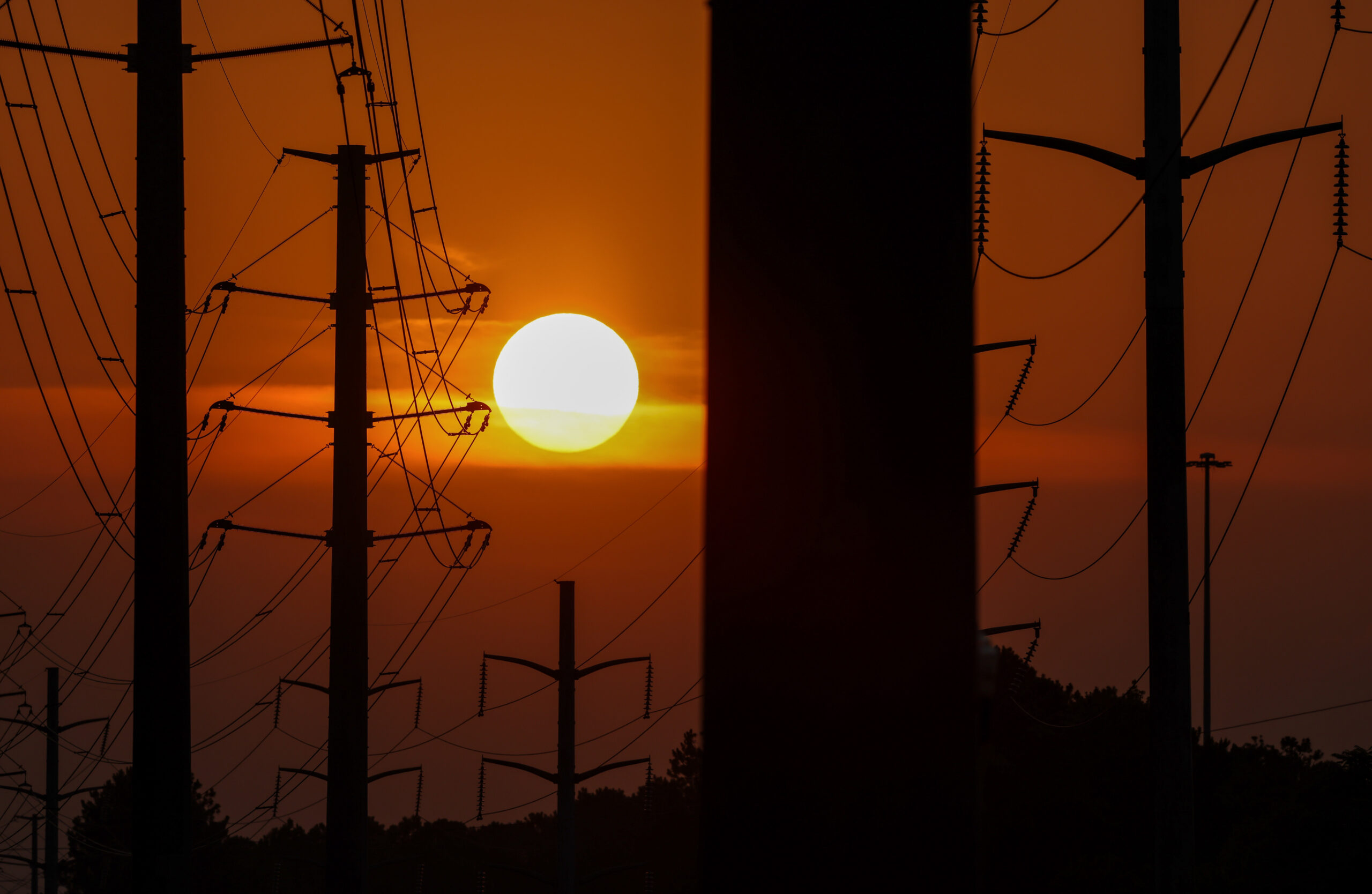How hot can a heat wave really get? Before June 2021, scientists thought they knew.
That’s when one of the most extreme heat spikes ever observed hit western North America, leaving at least 1,400 people dead. Lytton, British Columbia, smashed the 84-year-old Canadian heat record on June 26, reaching 46.6 C (116F).
And it smashed that the next day by 1.3C.
And smashed that the next day by another 1.7C.
And the next day, Lytton burned to the ground.
When a team of climate scientists assembled days later to analyze the heat wave, they found that the local historical weather data offered a paradox: Their standard approach for estimating a heat wave’s rarity concluded that the new records were too extreme to occur in the region where they actually did. They were in a sense “impossible” even though they actually occurred, as three American scientists put it earlier this year.
Read more: Extreme Heat Is Killing European Workers Despite Government Efforts
They adjusted their method to accommodate the new reality (and use that approach still), but noted that “follow-up research will be necessary to investigate the potential reasons for this exceptional event.”
In the four years since then, dozens of studies have taken up that challenge, with a tightening focus on a simple question that eludes easy answers: How hot can it get? The answer has grave implications for humanity, from those living in places where high temperatures are currently rare to those in places that are increasingly on the edge of habitability as climate change makes heat more intense and frequent. Everyone, everywhere, needs to know the risks about where they live.
There are as many answers to this question as there are thermometers around the globe. To make finding an answer slightly more manageable, scientists look not at absolute temperatures, as anybody would when leaving the house in the morning. Instead, they parse each weather station’s departures from the average.
The 2021 event “shocked everyone, including specialists working on the subject. People were completely stunned,” said Robin Noyelle, a post-doctoral researcher in climate science at ETH Zurich.

Heat can spike in any season or place. The most anomalously warm temperature was actually set in Antarctica, where temperatures rose 39C (70F) above average in March 2022. Temperatures at the North Pole surged 20C higher than normal in February, just past the melting point in the middle of winter. Those anomalies are particularly extreme in part because those areas are so dry, and also because it’s easier to heat something cold. But how much normal temperatures could deviate is arguably more pressing in places where people live and where heat is particularly acute in summer.
Years of poring over statistics and model output — on top of basic common sense — has taught scientists that there is a heat limit.
“You can’t have 500 degrees,” said Michael Wehner, a senior staff scientist at Lawrence Berkeley National Laboratory.
That research has also shown which meteorological ingredients are most likely to fuel extreme heat.
Cloudless skies and high pressure work to allow more of the sun’s energy to reach the Earth while dark surfaces keep it trapped close to the ground. Lower altitudes have higher pressure, which means they can get hotter. And lastly, a lack of water can allow heat to build unchecked. Places where these factors are in play are the most likely to see the hottest temperatures.
Many of these elements were in place during the June 2021 western North American heat wave, and they’re common in the hottest places on the planet.
“Basically all of these conditions are met in Death Valley, but not in many other places in the world,” said Friederike Otto, a climate scientist at Imperial College London and co-founder of World Weather Attribution, a UK-based team of scientists who undertook the 2021 heat wave analysis. Furnace Creek in California’s Death Valley set the highest-ever recorded temperature of 56.7C in 1913, according to the World Meteorological Organization.
And whatever the upper limit for anomalously high temperatures at a particular location may be, it too will rise with global warming, she said.
Several groups around the world are stalking heat’s theoretical maximum and how it’s set to change, motivated by the need for governments and companies to understand the conditions people and infrastructure will have to withstand in coming decades.
Multiple papers have attempted to tease out how conditions miles above the Earth’s surface can drive heat. The “meteorology nitty-gritty details” are being worked out, said Erich Fischer, a climate scientist at ETH Zurich, but “we now have a much, much better understanding of what sets that thermostat.”
That includes developing new tools and applying them to past episodes of extreme heat, seeking a second opinion on what was or wasn’t possible at the time.
Wehner, the Berkeley National Lab scientist, and two colleagues in a recent paper defined temperatures as “impossible” when they exceed an upper heat limit, as determined by a commonly used statistical approach. They then examined whether that heat was indeed impossible or just superlatively rare in a preindustrial climate.
They found 1,545 unprecedented temperatures that occurred between 1901 and 2022. By drawing additional data from nearby weather stations, they found that their method was able to make sense of 86% of the impossible temperatures, compared with 16% with the original approach. The number of remaining “impossible” events rises through the 21st century, as the world warms more quickly.
“It is clear that whether or not a given historical event is deemed ‘impossible’ is largely a function of what statistical methods are used,” they wrote earlier this year.

Artificial intelligence is also helping project what maximum heat looks like in the future.
Noah Diffenbaugh, a climate scientist at Stanford University, has begun conducting extreme weather climate-attribution studies using AI. His team trains machine-learning programs on physical models that can replay past weather extremes under different greenhouse gas scenarios to estimate the role of climate change.
They are also trying to use this approach to estimate heat-related deaths. In a working paper not yet accepted by a peer-reviewed journal, Diffenbaugh, Stanford postdoc Christopher Callahan and colleagues suggest that if Western Europe’s lethal 2003 heat wave happened in a world slightly hotter than today’s, 17,300 more people would have died in a week. All told, the episode may have killed more than 70,000.
The approach “enables us to make a prediction,” Diffenbaugh said, about what would happen if a past extreme heat wave occurred in a hotter world. “If we get the same weather conditions, how hot would those heat waves be?”
Others are developing new approaches to make global climate models more useful for local officials or citizens who want a plausible understanding of worst-case scenarios. Take Dallas, where out of thousands of simulations across 21 models, two models each project that by the 2040s, the temperature could hit 140F (60C) or above on at least one occasion — an unrealistic simulation.
“If you are, let’s say, trying to insure properties in Dallas, you don’t know if the risk model that you’re using is pulling from that model,” said Robert Rohde, chief scientist of the nonprofit research group Berkeley Earth. “It becomes very challenging to get a clean read.”
Berkeley Earth in December previewed an upcoming open-source project that uses historical data to reduce unrealistic results and hone in on plausible extreme scenarios.
Fischer, whose work on extreme temperatures demonstrated that a June 2021-type event was possible just before it happened, has spent the years since studying patterns within heat records. As hot as many events are every year, weather conditions generally fall short of their theoretical ceiling. And as important as understanding how anomalously hot it can get is decoding how long it can last.
“Maybe the next important question to understand is how long that heat could last. There is actually less of an easy constraint,” he said. Heat waves are typically regarded as persisting for no longer than several days. “We basically have no law of physics that tells us it can not last longer than three weeks or four weeks,” Fischer said.
Top photograph: Power transmission lines during high temperatures in Columbia, South Carolina, US, on Tuesday, June 24, 2025. Photo credit: Sam Wolfe/Bloomberg
Copyright 2025 Bloomberg.



